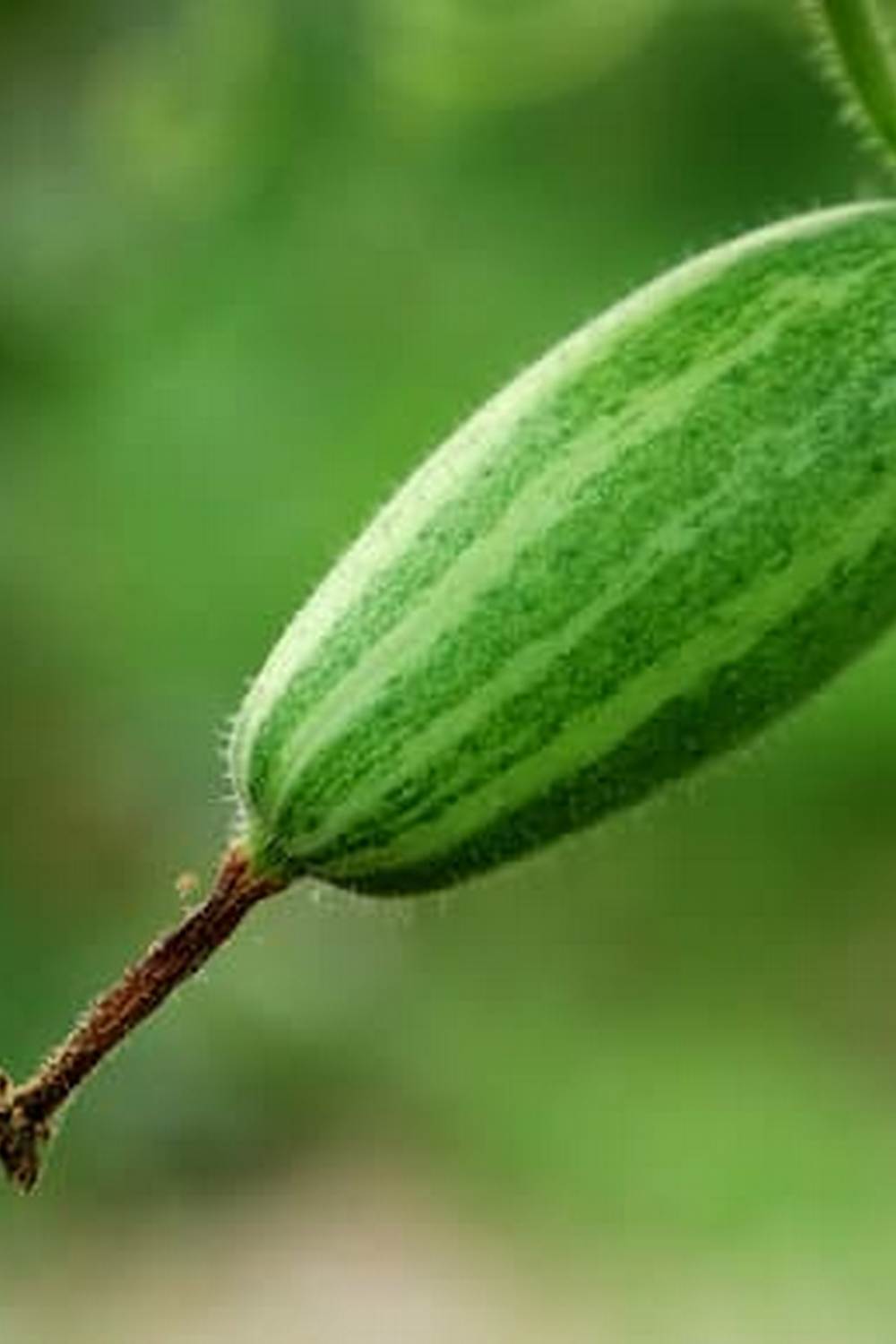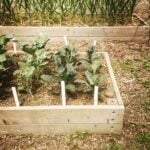Austin, Texas is known for its vibrant culture, live music scene, and delicious cuisine. However, one aspect of the city that often goes unnoticed is its thriving vegetable gardening community. In recent years, the trend of growing your own produce has gained popularity in Austin, and for good reason. The city’s favorable climate and soil conditions make it an ideal location for cultivating a wide variety of vegetables.
With mild winters and long, hot summers, Austin provides an excellent environment for vegetable gardening. In addition to the climate, the rich, well-draining soils in the area contribute to the success of vegetable gardens in Austin. Whether you are a seasoned gardener or a beginner looking to try your hand at growing your own produce, Austin offers ample opportunities to start a thriving vegetable garden.
In this article, we will explore everything you need to know about setting up and maintaining a successful vegetable garden in Austin. From the best vegetables to grow in the region to tips for managing pests and diseases, we will cover all aspects of vegetable gardening in Austin, Texas.
Additionally, we will delve into community-supported agriculture options and local farmers markets for those seeking fresh produce from other growers in the area. Join us as we dive into the world of Austin, Texas vegetable gardens and discover their incredible potential.
Climate and Soil Conditions in Austin, Texas for Vegetable Gardening
Austin, Texas is known for its unique climate and soil conditions that make it an ideal location for vegetable gardening. The city experiences hot, dry summers and mild winters, creating a challenging growing environment for many plants. However, with the right knowledge and techniques, it is possible to successfully grow a variety of vegetables in Austin.
The soil in Austin is generally clay-based, which can be difficult to work with. It tends to compact easily and drain poorly, making it less than ideal for vegetable gardening. However, with the addition of organic matter such as compost or manure, the soil can be improved to provide a better environment for vegetable growth.
In terms of climate, Austin’s long, hot summers can be both a blessing and a challenge for vegetable gardeners. Some heat-loving vegetables such as tomatoes, peppers, and okra thrive in this environment. However, it is important to provide adequate water and shade during the hottest months to prevent heat stress in plants. Additionally, choosing heat-tolerant varieties of vegetables is key to successful gardening in Austin’s climate.
Overall, while the climate and soil conditions in Austin present some challenges for vegetable gardening, with proper care and attention it is possible to grow a wide variety of delicious and nutritious vegetables in this region. By understanding the unique needs of the local environment and choosing appropriate plant varieties, gardeners in Austin can enjoy bountiful harvests from their vegetable gardens.
Best Vegetables to Grow in Austin, Texas
When it comes to growing vegetables in Austin, Texas, there are many options that thrive in the climate and soil conditions of the region. Whether you have a large backyard or just a small balcony, there are plenty of vegetables that will do well in the Austin area. Here are some of the best vegetables to consider growing in your Austin, Texas vegetable garden:
- Tomatoes: With plenty of sun and warm weather, tomatoes are an excellent choice for Austin gardens. They can be easily grown in containers or directly in the ground.
- Peppers: Both sweet and hot peppers flourish in the heat of Austin. They also add vibrant colors to any garden.
- Squash: Summer squash varieties like zucchini and yellow squash are ideal for Austin’s long growing season and hot summers.
- Okra: This heat-loving vegetable thrives in the warm climate of Austin and is a popular choice for many local gardeners.
In addition to these vegetables, leafy greens such as lettuce, kale, and spinach also do well in Austin’s cooler winter months. Root vegetables like carrots and beets can be grown successfully during the milder seasons as well.
When planting your vegetable garden in Austin, Texas, it’s important to pay attention to the specific growing requirements for each type of vegetable. While some may need ample sunlight, others may prefer partial shade. Understanding these needs will help you maximize your harvest.
Lastly, consider incorporating herbs into your vegetable garden as well. Culinary herbs such as basil, cilantro, and parsley not only add flavor to your cooking but also attract beneficial insects to your garden.
Overall, with careful planning and consideration for your local climate and soil conditions, you can enjoy a bountiful harvest from your very own Austin Texas vegetable gardens.
Tips for Starting and Maintaining a Successful Vegetable Garden in Austin
When it comes to starting and maintaining a successful vegetable garden in Austin, Texas, there are a few key tips to keep in mind. The unique climate and soil conditions in this region can provide both opportunities and challenges for gardening enthusiasts. By following these tips, you can maximize the potential of your vegetable garden and enjoy a bountiful harvest.
Soil Preparation and Maintenance
One of the most important steps in starting a successful vegetable garden in Austin is to properly prepare the soil. You’ll want to ensure that the soil is well-draining and rich in organic matter. Adding compost or other organic material can help improve the soil’s fertility and structure. Regular maintenance, such as mulching and proper watering, will also be essential for keeping the soil healthy throughout the growing season.
Choosing the Right Vegetables
In Austin, Texas, certain vegetables thrive better than others due to the specific climate conditions. Heat-tolerant vegetables like tomatoes, peppers, okra, and sweet potatoes tend to do well in this region. Additionally, leafy greens such as kale, collard greens, and Swiss chard can also be successful crops for Austin vegetable gardens. It’s important to select vegetables that are well-suited for the local climate and growing season to increase your chances of a successful harvest.
Watering and Sunlight Requirements
Given Austin’s hot and dry climate, proper watering is crucial for vegetable gardens. Watering deeply but infrequently can help encourage strong root growth and prevent water wastage. Additionally, ensuring that your vegetable garden receives adequate sunlight is essential for plant growth.
Most vegetables require at least 6-8 hours of direct sunlight per day to thrive. By carefully managing your watering schedule and paying attention to sunlight exposure, you can set your vegetable garden up for success in Austin Texas vegetable gardens.
Community Supported Agriculture (CSA) Options in Austin
When it comes to supporting local farmers and getting fresh produce, Community Supported Agriculture (CSA) is an excellent option for residents of Austin, Texas. CSA programs allow individuals to purchase a “share” of a local farm’s harvest, typically receiving a weekly or bi-weekly supply of fresh fruits and vegetables throughout the growing season.
This not only provides residents with a convenient way to access high-quality produce but also allows them to support local agriculture and connect with their food sources.
Several CSA options are available in the Austin area, offering a variety of produce and membership benefits. Some popular CSA programs in Austin include:
1. Johnson’s Backyard Garden: This well-established farm offers certified organic produce through their CSA program, with convenient pick-up locations throughout Austin.
2. Green Gate Farms: Known for their sustainable farming practices, Green Gate Farms offers diverse CSA shares that include seasonal vegetables, herbs, flowers, and more.
3. Tecolote Farm: Located just outside of Austin, Tecolote Farm provides organic produce through their customizable CSA shares, allowing members to select their preferred items each week.
Joining a CSA program in Austin not only provides access to fresh and locally-sourced fruits and vegetables but also supports the sustainability of small-scale farming in the region. By becoming a member of a CSA, individuals can enjoy a direct relationship with the farmers who grow their food while contributing to the vibrant agricultural community in Austin Texas vegetable gardens.
Local Farmers Markets for Fresh Produce in Austin
The city of Austin, Texas is known for its vibrant and diverse food scene, and this extends to the availability of fresh produce from local farmers markets. Austin residents are fortunate to have access to a variety of farmers markets throughout the city, offering a wide selection of locally grown fruits, vegetables, and other agricultural products.
One popular option for sourcing fresh produce in Austin is the Sustainable Food Center Farmers’ Market, which operates multiple locations around the city. At these markets, shoppers can find an array of seasonal fruits and vegetables from local growers, as well as other farm-fresh items such as eggs, meats, and artisanal food products. The emphasis on sustainability and support for local farmers makes these markets a favorite choice for those seeking high-quality produce.
Another notable farmers market in Austin is the Texas Farmers’ Market at Mueller, which showcases an assortment of farm-fresh goods from Central Texas producers. In addition to a wide selection of fruits and vegetables, this market also features live music and a variety of food vendors offering ready-to-eat meals made with locally sourced ingredients. This creates a lively and communal atmosphere that adds to the overall experience of shopping for fresh produce.
For those looking to support small-scale local farmers and artisans while also enjoying a unique shopping experience, the Barton Creek Farmers Market is an excellent choice. This market offers a diverse range of products including organically grown fruits and vegetables, pasture-raised meats, artisan baked goods, homemade preserves, and handcrafted items. The direct interaction with the producers provides consumers with an opportunity to learn about the origins of their food and connect with the individuals responsible for growing it.
Overall, residents of Austin have many options when it comes to purchasing fresh produce from local farmers markets. These venues not only offer access to high-quality fruits and vegetables but also provide an opportunity to support sustainable agricultural practices within the community.
Pest and Disease Management for Vegetable Gardens in Austin
As with any garden, pest and disease management is an important aspect of maintaining a successful vegetable garden in Austin, Texas. The warm and humid climate of Austin can create an environment suitable for various pests and diseases that can wreak havoc on your vegetable plants if not properly managed.
Identifying Common Pests and Diseases
One of the first steps to effective pest and disease management in your Austin, Texas vegetable garden is being able to identify the most common pests and diseases that affect vegetable plants in the area. Some of the common pests include aphids, caterpillars, and squash bugs, while diseases such as powdery mildew, blight, and root rot are prevalent in the region.
Natural Pest Control Methods
For those looking for natural and chemical-free options for managing pests in their vegetable gardens, there are several effective methods to consider. Planting companion plants that repel pests, using insecticidal soaps or neem oil, and introducing beneficial insects like ladybugs and lacewings are all eco-friendly ways to control pests in your garden.
Preventative Measures
In addition to natural pest control methods, implementing preventative measures can help reduce the risk of infestations and diseases in your Austin Texas vegetable garden. This includes practicing crop rotation, proper spacing between plants to improve air circulation, using mulch to prevent soil-borne diseases, and regularly inspecting plants for signs of trouble. By staying proactive with preventative measures, you can minimize the risk of pest infestations and diseases in your vegetable garden.
By being diligent with pest and disease management strategies tailored to Austin’s specific climate and conditions, you can enjoy a thriving vegetable garden yielding bountiful produce throughout the growing season.
Success Stories
In Austin, Texas, many residents have found great success in growing their own vegetable gardens despite the unique climate and soil conditions in the area. One notable success story is that of the Johnson family, who transformed their backyard into a thriving urban vegetable garden.
Despite the challenges of the hot and dry weather in Austin, they have managed to successfully grow a variety of vegetables including tomatoes, peppers, and squash. They attribute their success to using raised beds and drip irrigation to conserve water, along with regularly adding organic compost to enrich the soil.
Another inspiring success story comes from the Martinez community garden, where a group of neighbors came together to create a shared space for vegetable gardening. By pooling their resources and knowledge, they have been able to cultivate an impressive array of vegetables such as kale, okra, and green beans. This communal approach not only fosters a sense of community but also allows for sharing surplus produce with each other.
One more remarkable example is the Smith farm located just outside Austin. This family-owned farm has been supplying fresh produce to local markets for over 30 years. Through careful crop selection and sustainable farming practices, they have become known for their high-quality organic vegetables that are popular among residents in Austin and neighboring towns.
| Location | Success Factors |
|---|---|
| Johnson Family Backyard | Raised beds, drip irrigation, organic compost |
| Martinez Community Garden | Communal approach, resource sharing |
| Smith Family Farm | Careful crop selection, sustainable farming practices |
These success stories serve as inspiration for aspiring vegetable gardeners in Austin. They highlight the potential for growing a variety of vegetables despite the challenges posed by the local climate and soil conditions. By learning from these examples and implementing similar methods, individuals and communities can achieve their own successes in cultivating fruitful vegetable gardens in Austin, Texas.
Conclusion
In conclusion, Austin, Texas is a prime location for growing a thriving vegetable garden. With its favorable climate and soil conditions, residents have the opportunity to cultivate a wide variety of vegetables throughout the year. From tomatoes to peppers to leafy greens, the options are endless for those looking to reap the benefits of homegrown produce.
As more individuals embrace sustainable living and seek locally sourced food, the potential of Austin Texas vegetable gardens continues to grow. Community Supported Agriculture (CSA) programs and local farmers markets provide residents with access to fresh, organic produce while also supporting the hard work of local growers. These options not only contribute to a sense of community but also promote healthier eating habits.
Furthermore, through proper pest and disease management techniques and the sharing of success stories from experienced gardeners, those new to vegetable gardening in Austin can feel confident in their ability to start and maintain a successful garden. As interest in organic gardening and self-sufficiency grows, so too does the potential for Austin Texas vegetable gardens to flourish and thrive within the community.
Frequently Asked Questions
What Fruits and Vegetables Grow Well in Austin TX?
In Austin, TX, fruits like figs, peaches, and blackberries grow well due to the warm climate. Vegetables such as tomatoes, peppers, squash, and herbs thrive in the region’s long growing season.
Can You Grow a Garden in Austin Texas?
Yes, you can definitely grow a garden in Austin, Texas. The city’s climate is conducive to gardening with its long growing season and ample sunshine. Many residents successfully cultivate various plants in their gardens.
Can You Have a Vegetable Garden Year Round in Texas?
It is possible to have a vegetable garden year-round in Texas, especially in regions like Austin where the climate is relatively mild even during the winter months. By choosing cold-hardy vegetables and using protective coverings, it’s feasible to continue gardening throughout the year.

If you’re looking to get into vegetable gardening, or are just looking for some tips on how to make your current garden better, then you’ve come to the right place! My name is Ethel and I have been gardening for years. In this blog, I’m going to share with you some of my best tips on how to create a successful vegetable garden.





